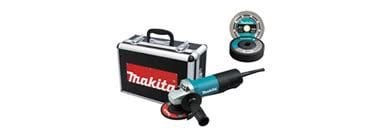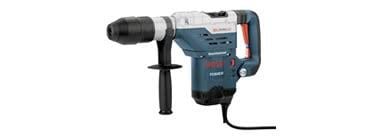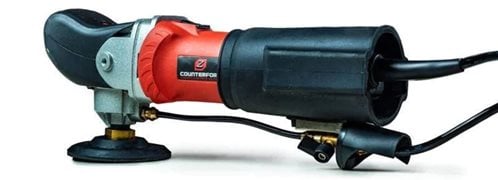Handheld Concrete Grinders & Hammer Drills
Compare types of power cools and what they doHand-Held Grinders & What they do
A hand-held grinder could be one of the most versatile items in your tool chest. It's a fast solution for smoothing out bumps and other irregularities in both horizontal and vertical concrete surfaces. You can also use it to remove graffiti and worn coatings or paint and to roughen up floor surfaces in preparation for coating application.
With grinding diameters of 5 inches or less, these tools can't replace walk-behind surface preparation machines for profiling large areas of concrete. But they work easily in tight areas where the larger units can't maneuver, such as in corners and close to walls.
Combination Hammer Drills & What they do
Combination hammers bridge the gap between a rotary hammer and light demolition hammer. They are ideal for handling major concrete drilling jobs as well as chiseling or chipping. Though not powerful enough to rip out a slab, they can handle concrete thicknesses of up to 3 or 4 inches.
Demolition Hammers & What they do
You won't get a rotary drilling function with a basic demolition hammer, but in exchange, you'll get a lot more chipping performance than you will with a combination hammer. Even light-duty models can take out 350 to 400 pounds of 5000-psi concrete per hour. And higher-amp models deliver enough impact force for such applications as breaking up sidewalk sections up to 6 inches thick. To absorb most of the pounding action, these demolition hammers typically have vibration-dampening handles to cushion the blow.
Cordless Hammer Drills & What they do
You should carry at least one cordless hammer drill/driver to every jobsite. They are ready to go if an electrical outlet isn't handy, and they give you complete freedom of movement if you need to move around the site to do your drilling work. They also eliminate cords, a major tripping hazard. In hammer drill mode, they make the task of drilling holes in concrete for anchor bolts or Tapcons effortless.
 Makita Hand Grinder
7.5 AMP motor for high power. Comes with aluminum case.
Makita Hand Grinder
7.5 AMP motor for high power. Comes with aluminum case.
 Bosch Combination Hammer
Optimized for one handed use, maximizing productivity.
Bosch Combination Hammer
Optimized for one handed use, maximizing productivity.
 Wet Polisher Bundle
Comes with diamond polishing pads.
Wet Polisher Bundle
Comes with diamond polishing pads.






